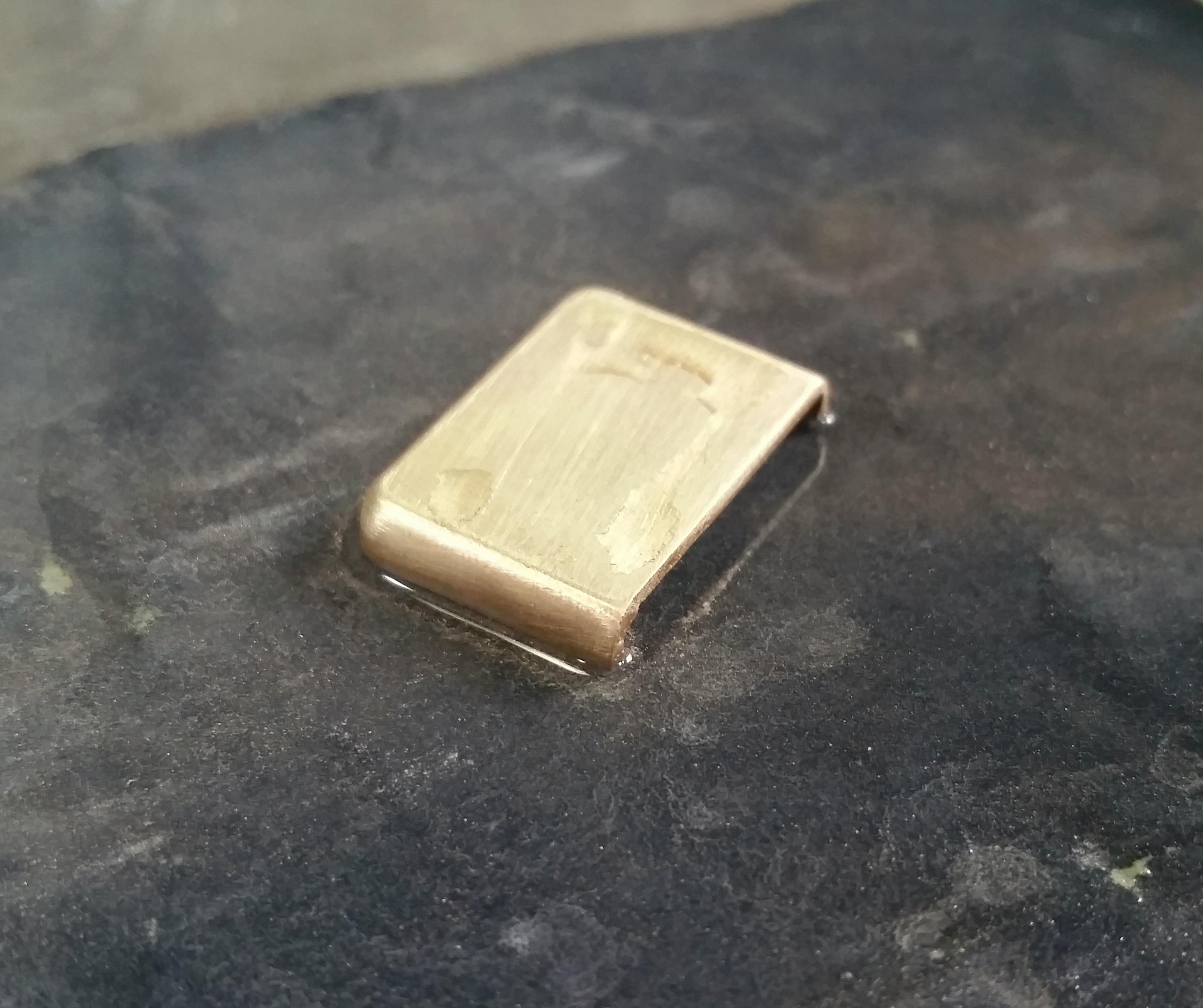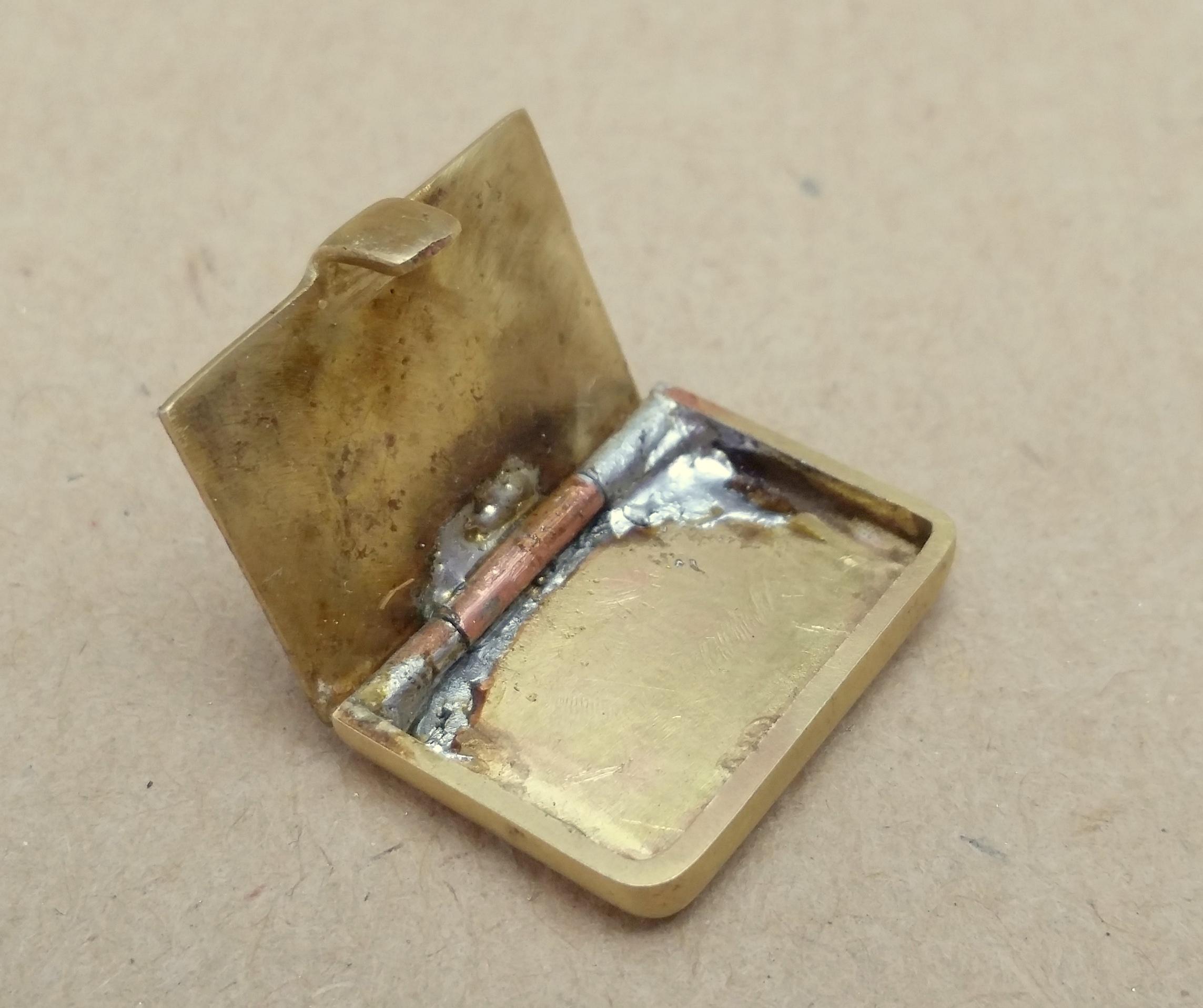Make Your Own SD Card Locket From Scratch!
by JGJMatt in Workshop > Metalworking
6744 Views, 96 Favorites, 0 Comments
Make Your Own SD Card Locket From Scratch!
.png)

Hello fellow makers,
We all know how important it is to keep your important documents on hand whilst traveling but small storage devices can also get lost really easily.
In this Instructable I am going to show you how to make a small locket from scratch that fits a micro SD card and can be attached to a keyring or even be worn as a necklace to keep all your important documents organised and close by.
Let's get making...
You Will Need:
To make this Instructable you will need the following:
- 2mm Bronze rod (I reused some from an old/failed project as you only need a tiny <10cm piece)
This can be found at your local hardware store in the welding/brazing section. I recommend using bronze when learning and then moving on to precious metals later.
- 1mm Bronze plate
- 2mm Copper tube
You can also use the brass tubing but I love the mixed metals with the brass, copper and silver.
- Silver solder
I recommend buying a kit like the one I linked as you will need the different melting temperatures for different parts of the ring, otherwise you can also use tin solder for the low temperature areas.
- a Butane/propane blow torch
- a Hammer
- an Anvil** (at $15 I highly recommend getting something like this)
Any piece of heavy metal with a smooth surface can be used, before I made myself this small jewellers anvil I used an old hammer head mounted in a vice and it worked great.
- Sanding paper (waterproof) around 60 to 400 grit and I would highly recommend a sanding sponge/block
- Metal polishing compound blocks
- Leather safety gloves
- Pliers
- Cutters
Optional:
- A Dremel
- Felt polishing pads
*As an Amazon Associate I receive a small percentage from sales made through provided links at no cost to you, this helps fund future projects.
Cutting the Bronze Plate:


For the locket we need to cut out two 15mm by 20mm rectangles out of the bronze plate (one piece will need an additional 5mm tab for the clasp as pictured)
This can easily be done using a Dremel or a jewellers saw as it is simple shapes but as I was already busy with some cutting on my little DIY CNC I quickly loaded up the shapes and let it cut it out for me.
Making the Frame:

Safety first!
Always wear leather gloves and face protection when forging metals, the pieces can cause serious burns even after standing for a while. Always handle your metal as if it is hot.
Now we will need to start shaping our bronze rod.
The frame of the locket will need a 50mm long piece but I suggest you forge this length first before cutting off the excess as it will make handling it easier.
Remember that the frame will only be on three sides and the hinge will close the fourth edge.
Now we need to anneal the bronze rod, with the butane/propane torch you need to heat up your bronze rod until it gets to a cherry red color and then quench it in a bucket of water (or if you are comfortable working with hot metal you can hot forge it without quenching first)

Tip: Pick a hammer that has a defect free head as all the scratches and dents from the head will be transferred to your piece.
When the rod has reached temperature you can place the rod on the anvil and start hammering it down on one side, try to keep your hammer head as flat as possible whilst moving across the rod.

While hammering you will feel the bronze getting harder, once you feel this happening you will need to reheat the rod as above.
Flipping the rod over from time to time will help keep it straight.
Now you can reheat the rod and then place it on its side and gently hammer down the side to end up with a uniform bar that's approximately 2mm by 1.5mm.
Solder the Frame:
Now that we have our bar made for the frame we can solder it to the cut plate.

Start by bending your newly forged bronze bar to fit onto the plate using a pair of smooth jaw pliers, I left the excess rod on while soldering for easier handling.
Place the parts onto a suitable surface, I use a ceramic tile and I highly recommend buying one of these honeycomb soldering blocks.
Amazon - Ceramic Soldering Block

Add silver solder flux and a small piece of silver solder (medium/hard) in the joint and start heating the joint with your butane torch.
When the piece reaches the melting point of the solder it will flow into joint.
Wait for the piece to cool completely.
Refine the Frame:
With the frame soldered into place we need to get rid of all excess material.

Using a Dremel with a diamond cutting disk I cut away any excess rod that was left after soldering and also to round the edges and corners.

Finally I took some wetted 220 grit sandpaper that I placed on a plane of glass to get a flat surface and started sanding the frame as pictured, not only to get the top flat but also to reduce the height so that the 2mm sits flush with the top when placed inside of the locket.

Personalize It:

For a extra little bit of personalization I decided to stamp my initials onto the top of the lid before we solder it on.
Making the Hinge:

Our hinge is going to be made from 2mm copper pipe, I salvaged this from some old refrigerator compressors so the ones you end up buying might have a larger inner diameter.
I used the diamond cutoff blade in my Dremel to cut three pieces of the copper pipe, two 4mm long pieces and one 10mm long piece.
After cutting the pieces I used a fine file and needle to get rid of any burrs and to clear the holes.

A normal sewing needle ended up fitting the inner diameter of our copper pipe perfectly so I went with it for our hinge pin.

Solder the Hinge:

Now for a tricky part, we need to solder on our hinge and lid. It's small and everything could end up fused together if too much solder is applied.
To make this part easier I decided to use a tin solder so that I can use a soldering iron instead of a blowtorch for more precision.
Start by adding solder flux to the pieces that will need to be soldered together then position your hinge into place.
I then use my soldering iron on its highest setting to heat up the area, then add some solder into just the corner of the hinge this will prevent too much seeping into the middle possibly seizing up the hinge.

Next we need to attach the lid. I start by adding a blob of solder to the centre of the hinge side of the lid and then positioning it onto the frame, once aligned we can start heating it up to solder it into place.


If your hinge did seize up because we used tin solder we can heat up the entire piece, remove the individual parts, clean up the solder and try again.
The Clasp:

I used a small needle file to refine and shape the clasp and also filed in a small notch where the clasp can latch onto.

Add a Splitring:

Next we need to solder on a splitring to the locket in order to hang it onto a keychain or necklace.
The only thing you have to be careful with is to not heat up the locket too much as you might risk loosening the solder of the hinge.
Make It Shine:

I started with the coarse compounding block and a felt polishing bit and then moved down to medium and fine until all the scratches are removed.
You can finish off the ring with some liquid polish and a soft cloth to bring out that mirror finish.
Tip: If your stamping isn't very visible you can cover it with a black permanent marker, let it dry and buff off the excess using a soft damp cloth.
The Finishing Touches:

To keep the SD card from rattling around and scratching up I added some padding on the inside.
I used some soft 1mm foam and cut out a square that fits the inside of the locket and used some contact adhesive to keep it in place.
Enjoy!


















